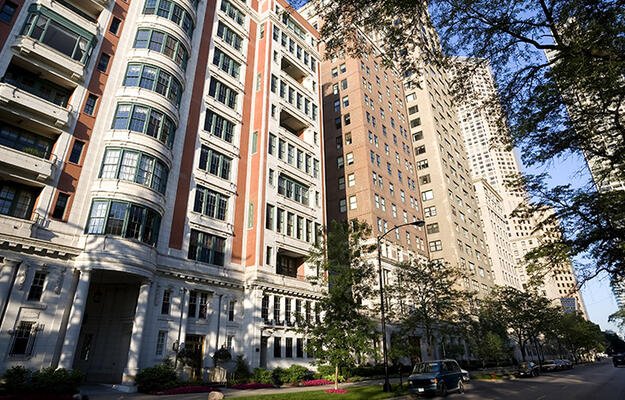
(James Andrews1/Shutterstock)
Lessons from New York’s “Zombie Law” Can Help Cities Avoid the Risks of Vacant Homes
Though all vacant homes can adversely affect their surrounding communities, “zombie” homes are particularly difficult for local governments to address. Zombies are abandoned houses in a state of legal limbo, waiting for a bank to complete a foreclosure. Upon receiving notice of an intended foreclosure, many households walk away. And because the bank does not yet have legal possession and the title to the home, the property is left to deteriorate. Data show the number of zombie properties has also increased over the past year in the wake of COVID-19.
New York, the state with the largest number of zombie properties, provides a great example of how collaborative partnerships can empower local governments to effectively address these properties. In 2016, the New York State legislature passed the Abandoned Property Neighborhood Relief Act, or the “Zombie Law.” The Zombie Law requires financial institutions that hold mortgages in delinquency or foreclosure to maintain the houses and comply with code requirements.
To assist local governments in leveraging the Zombie Law, the New York Attorney General’s Office partnered with the Local Initiatives Support Corporation (LISC), a community development financial institution (CDFI), to establish the New York “Zombie” and Vacant Properties Remediation and Prevention Initiative, or Vacants Initiative. LISC leveraged New York foreclosure settlement funds by allocating competitive grants to 76 New York municipalities for capacity building and technical assistance so they could effectively implement the Zombie Law.
We spoke with Joe Schilling, a senior policy research associate in the Urban Institute’s Research to Action Lab and coauthor of a new report with LISC on the Zombie Law and Vacants Initiative, to learn more about law’s effects and the lessons other policymakers can learn from its implementation.
Your research contends that zombie properties are a particularly difficult type of vacancy to resolve. What effects do these and other long-term vacancies have on communities?
The impact that zombie properties have starts at a very local level and then reverberates from there. When you have a home that has been vacant for many months, it decreases in value, and the cost required to rehabilitate that property increases. It can serve as a magnet for crime and fires. You also have costs to the neighborhood in terms of adjacent property values. We know that economic decline can often spiral out from a single property or a cluster of vacant properties to other neighborhoods.
Zombie properties are particularly difficult to address because they often occur in neighborhoods with lower property values. In high property value areas, banks will take immediate steps to preserve the property and complete the foreclosure process. But when the property value is lower, many mortgage lenders and banks would just as soon walk away, leaving local governments and communities to deal with it.
How does institutional racism play into these types of vacancies?
Not surprisingly, you find a higher concentration of vacant and abandoned properties in neighborhoods of color, and some of that has to do with redlining and exclusionary zoning that perpetuates neighborhood decline. We also have to go back and think about the 2008–09 foreclosure crisis. Many fly-by-night mortgage companies came in and targeted Black and brown neighborhoods, selling them predatory loans. Then when the foreclosure crisis hit, it created a whole new wave of zombies and vacant and abandoned homes that still pose problems today.
What can other cities, states, or localities learn from New York’s Zombie Law?
Making lending institutions legally responsible for maintaining zombie properties was a key component of its success. The law clarified responsibility and gave local governments the power to impose penalties. Another successful component of the law is that it established, for the first time, a statewide registry of zombie properties.
But the law alone would not have had the impact it did without the capacity-building grants that went to local governments, which enabled them to hire coordinators, implement the data software that they needed, and work with foreclosure prevention NGOs in certain communities. The true genius of the Zombie Law was the accompanying capacity-building initiative and technical assistance provided by LISC.
What were the most effective strategies for enforcing the Zombie Law?
First and foremost, data serve as the foundation for any kind of intervention to deal with vacant and abandoned properties. You need data on several key questions: How many vacant and abandoned homes do you have? Where are they? Who owns or used to own them? What else is going on in the neighborhood? How do vacancy data align with other important factors, such as health, socioeconomic, or market indicators? In this initiative, a number of the local government grantees were able to use a software called Building Blocks, which enabled them to take their code enforcement and inspection data and overlay it with neighborhood indicators and other property information.
The second strategy that cities in the Zombies Initiative pursued was expanding their ability to do strategic code enforcement, which refers to taking a proactive, systematic approach to neighborhood stabilization and housing preservation. Many of the cities hired new frontline staff and created a new coordinator position. These “zombie quarterbacks” would help analyze the data, engage the community to understand neighborhood dynamics, communicate with banks, and coordinate across departments and with nonprofit partners.
The last important strategy is establishing local legal capacity. Not every lending institution or property owner is going to voluntarily bring their property into compliance. Thus, in some cases, grantees hired their own attorneys or partnered with nonprofit public interest law centers to file court actions against noncooperating lending institutions. And that also sent a message throughout the lending communities in New York that municipalities were taking the Zombie Law seriously, and that failure to take care of a property could result in legal action. In that way, municipalities were able to create a deterrent effect.
Your report states that one important federal policy change would be the adoption of the Neighborhood Homes Investment Act (NHIA), which would provide federal tax credits to support the rehabilitation of single-family houses in designated rural and urban communities. What do you think would be the implications of passing this law?
In the work of reclaiming abandoned properties, the Vacants Initiative focused on the front end, by trying to help reclaim vacant properties through strategic code enforcement. But ideally, you’d want to think about ways to work upstream.
For instance, imagine someone on a fixed income who is living in an older home that’s starting to deteriorate, and they still have a mortgage. If no one does anything, in 5 or 10 years that home is going to be abandoned, and then you’ll have all the associated problems. The NHIA would provide a way to work upstream and get resources into the hands of the homeowner to make critical rehabilitation and repairs. The hope is that if these tax credits enter the market, a CDFI or a savings and loan association could work with small to midsize construction and rehab firms in order to get the right financing into the hands of the people who need it most.


